Hello and welcome back to another edition of The Rimfire Report! I recently had a chance to speak with a couple of friends of mine who had the opportunity to compete in the Mid Atlantic Rimfire Series (MARS). My friends (Josh and Tom) both shared with me some lessons learned from their most recent competition. From the conversations, I was able to pull four solid tips that I think would be helpful for all people interested in competing in a Precision Rimfire Series Competition.
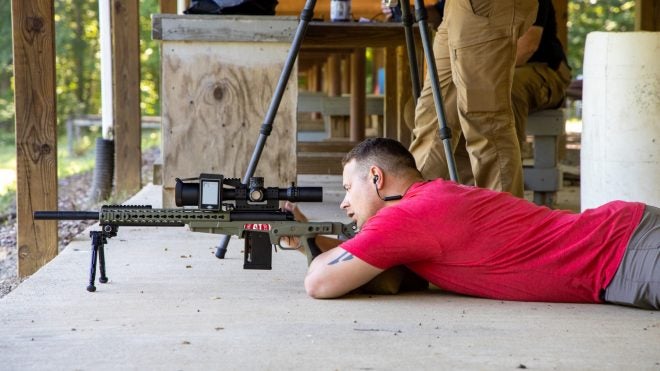
The Rimfire Report: Lessons Learned from Competing in a Precision Rimfire Competition
The Rimfire Report: Lessons Learned from Competing in a Precision Rimfire Competition
To give a bit of background on my friends before we start, both Tom and Josh are experienced shooters. Both of them do particularly well with long-range shooting and I have a lot of respect for both their shooting ability as well as their analytical abilities as competitors. Tom and Josh each used a different firearm in the competition, although, both were bolt action rimfire rifles.
Tom’s Rifle
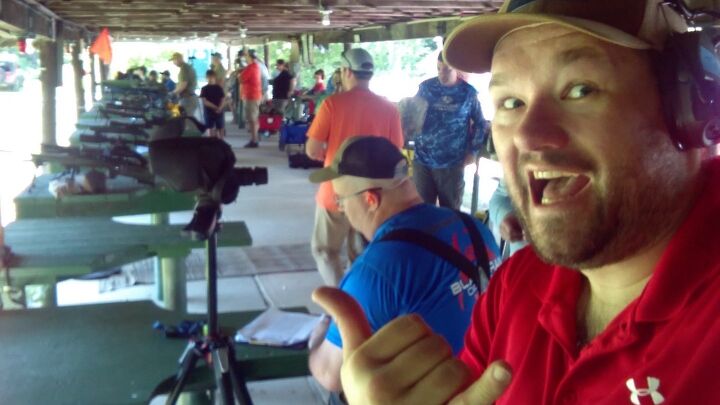
The Rimfire Report: Lessons Learned from Competing in a Precision Rimfire Competition
Tom ran with a Savage MKII FVSR rifle, generic low pro rings to mount a Leupold MKIV 2.5-8x, which tom considered to be the bare minimum magnification for this match. Tom also made use of a Harris bipod. He used CCI Standard velocity ammunition for the competition as well as a sling although it wasn’t necessarily needed.
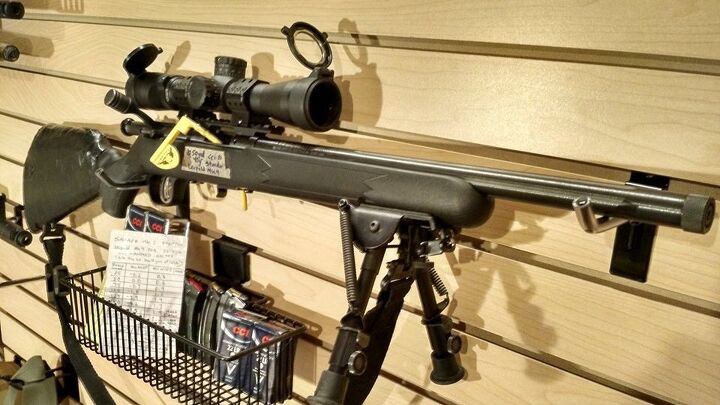
The Rimfire Report: Lessons Learned from Competing in a Precision Rimfire Competition
Josh’s Rifle
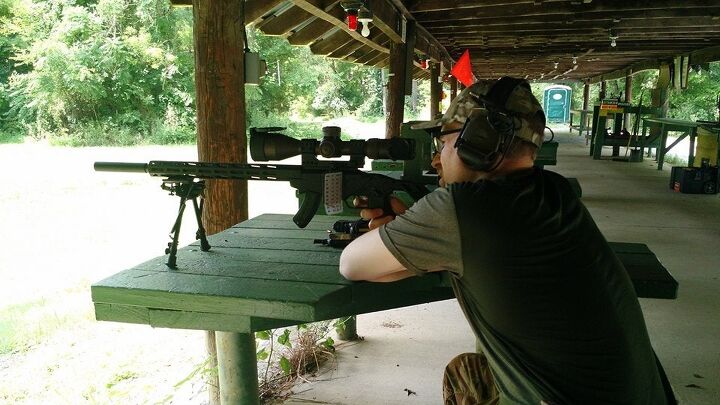
The Rimfire Report: Lessons Learned from Competing in a Precision Rimfire Competition (Note the Dope Card attached to the rifle)
Josh ran with is arguably one of the more popular selections for a PRS competition – the Ruger Precision Rimfire. For his optic, he ran with a Vortex Razor HD Gen II 4.5-27×56. Josh’s rifle has been slightly modified with a cut-down barrel to 16.5″ and with a suppressor attached as well. Luckily the PRS is a competition that allows its competitors to mount and use suppressors making for a much more comfortable experience. So with that brief introduction, let’s get on to the lessons learned to form this PRS competition. This also happened to be Josh’s first PRS competition.
#1 Reconfirm Your Zero
This one might seem like a no brainer right? Zero your rifle and you’re good to go! However, something many people won’t take into account when zeroing in their rifle is the atmospheric and weather changes that can take place since you zeroed in your rifle.
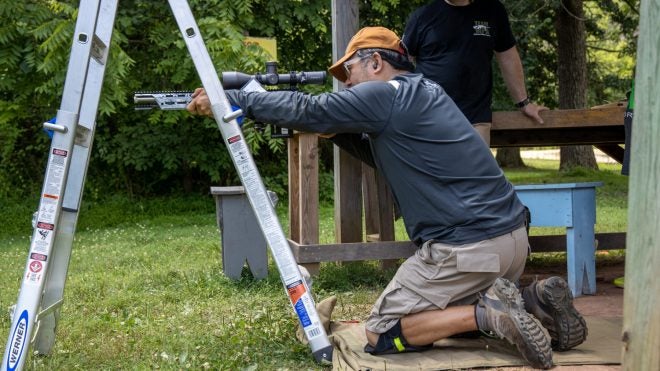
The Rimfire Report: Lessons Learned from Competing in a Precision Rimfire Competition
Both Josh and Tom had zeroed in their rifles many weeks before. However, when they went back to the range just the day before the MARS match, they took along their PRS rifles to reconfirm their zeroes. What they found is that in the weeks after their initial zero their rifles were off by about a 1/2 MOA. In a precision competition, this can mean the difference between making a hit on a target or losing valuable points.

The Rimfire Report: Lessons Learned from Competing in a Precision Rimfire Competition
In fact, they both mentioned that several other shooters said that they can’t even trust their rifle’s zero from two weeks prior. While the guns will behave more or less the same that doesn’t mean that the bullet will once it has left the barrel. So a good rule of thumb is to try as hard as possible to re-zero in the same conditions that you’ll be shooting it.
#2 Know Your Rifle Well
A lot of PRS competitions will have you shooting from many odd positions and sometimes even have you transition between objects or positions during the course of fire. Tom experienced a few hiccups during one course of fire due to a number of factors, however, he attributed some of this to not practicing with the rifle enough.
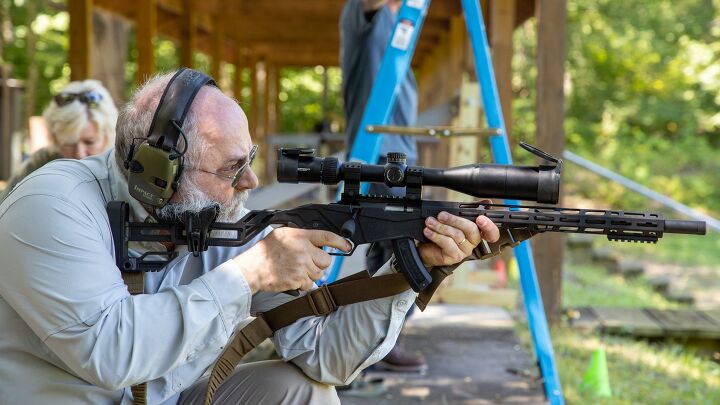
The Rimfire Report: Lessons Learned from Competing in a Precision Rimfire Competition
Just like anything, practicing with the tools you’re using is always a recipe for success. Throughout each stage you will be cycling the bolt, reloading the firearm, moving the rifle in and out of firing positions and some of these things can get you caught up. For instance, once such a shooting platform was a cattle fence and due to the length of the rifle the barrel ended up smacking the rungs several times in Tom’s case.
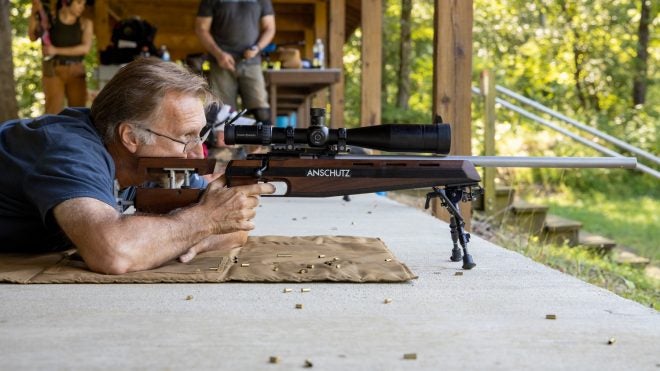
The Rimfire Report: Lessons Learned from Competing in a Precision Rimfire Competition
Reloading is of key importance as well, as you’ll not want to spend too much time having to think about how to reload your gun, instead, having your rig as more or less an extension of your body will free your mind up to focus on the course of fire before you.
#3 Stay Hydrated
Nodding to the example above, one of the contributing factors to Tom’s hiccup was the heat. Tom admitted that he hadn’t stayed hydrated enough and got a bit cooked in the sun which led to him forgetting the course of fire.
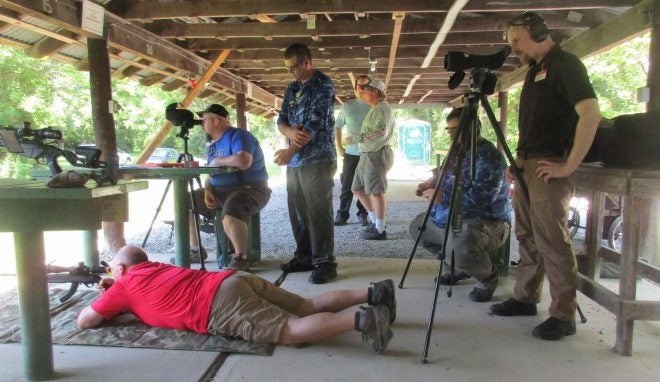
The Rimfire Report: Lessons Learned from Competing in a Precision Rimfire Competition
Water is the main component of blood that supplies all of our cells with oxygen and by extension our muscles. In addition, it regulates our temperature and can keep you from becoming dizzy, lethargic, or confused during an intense course of fire.

There isn’t always a reliable early indicator of dehydration aside from thirst so its best to just drink water regularly throughout the match, whether this is right before each course of fire or right after or in-between stages – the important thing is to make it a habit so you don’t forget and wind up fighting yourself during the match.
#4 Don’t Forget Your Dope!
A DOPE (Data On Previous Engagements) card is a card used to give you a more or less accurate readout of your rifle’s performance at certain distances when using the same ammunition. This can help you make shots at longer ranges with confidence and will ultimately lead to better first shots and by extension – higher scores.
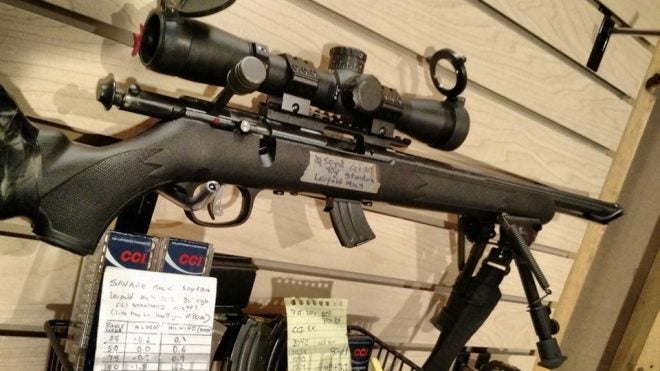
Notice Tom’s DOPE Card is kept with the rifle at all times.
DOPE cards can go anywhere from being incredibly simple to be incredibly complex. The most simple form of one is to have a particular kind of ammo and have a drop associated with each distance. This will help you in making decisions on where to hold on your target when engaging targets at further distances.
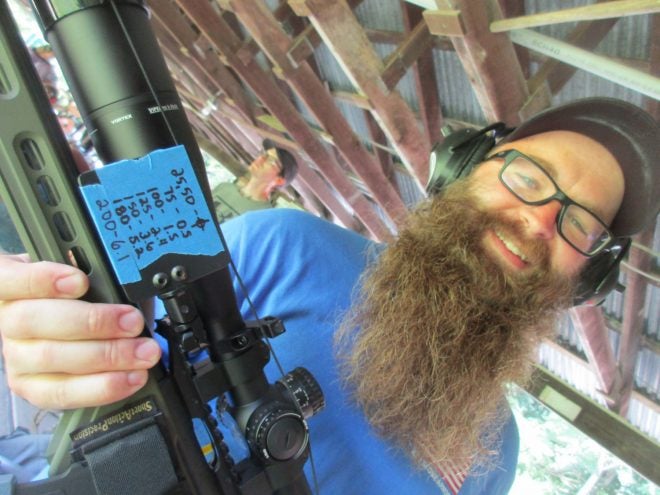
Another competitor, Garret proudly showing off his DOPE card
Whatever you choose to use, it’s important to listen to the DOPE card and not go off of your gut feeling. Josh communicated to me that despite several reminders to himself he chose to ignore his DOPE card and that ended up costing him several possible hits one of the stages.
The main point of this article is to help those looking to get into the Precision Rimfire Series type of shooting scene. When armed with knowledge, skill, and preparation on your side you’ll be able to have a much more enjoyable time at your first match. As always, thanks for stopping by to read The Rimfire Report! We’ll see you next time.

Personal thanks to Macguns for many of the photos used in this article. All other photos courtesy of Josh and Tom.
We are committed to finding, researching, and recommending the best products. We earn commissions from purchases you make using the retail links in our product reviews. Learn more about how this works.
 Your Privacy Choices
Your Privacy Choices
